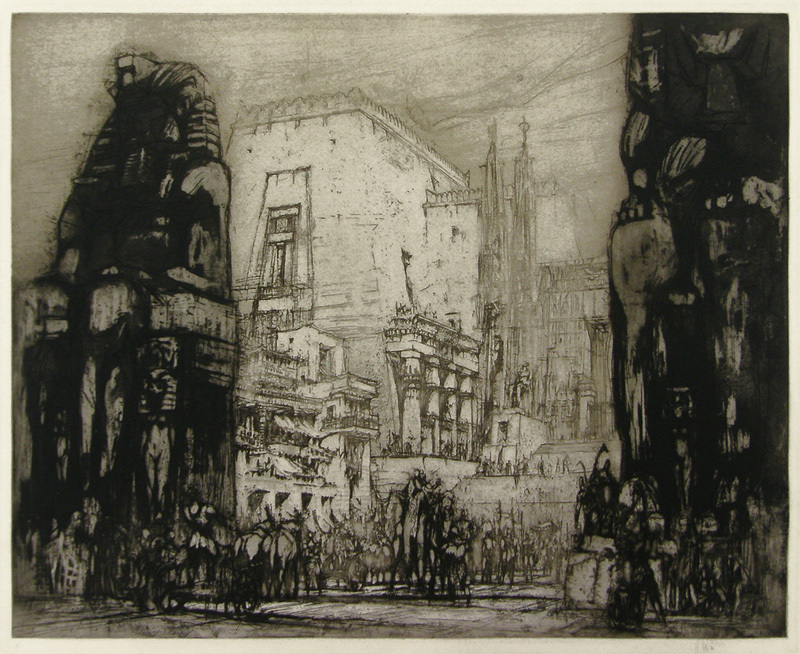
19th, 20th & 21st Century Fine Prints
707-546-7352 · fax 707-546-7924 · web: www.annexgalleries.com · email: artannex@aol.com
At Thebes by William Walcot

At Thebes
William Walcot
At Thebes
William Walcot
1874 - 1943 (biography)This extremely rare large etching of the Memnon Colossi at Thebes, Egypt was from the collection of the San Francisco rare book dealer Warren Howell (1912-1984).
In 1914 William Walcot did a another large etching and drypoint (Dickens 20, H/L 35) titled "The Trojan Horse" which could be a companion piece in size and composition. The Sotheby's auction of 6/27/01 of the Leverhulme Collection, lot 469 of the auction offered both "The Trojan Horse" and a "Palace at Thebes, Egypt" which was also an artist's proof, which was a similar size to this print (no image was available). The title "At Thebes" is not noted in either Dickens or Harvey-Lee. This impression may be the same as lot 469 before the plate was trimmed - or another print entirely.
The Temple at Thebes was destroyed by flood and scavengers and this is the artist's impression of how it originally looked. The twin sculptures, the "Colossi", were representations of Amenthotep III (Memnon) and his wife Queen Tiye and are 60 feet high and were each hewn out of a single block of quartzite sandstone. They still stand at Al Bairat, Luxor, Luxor Governorate, Egypt.
The Pharaoh Amenhotep III built not only the largest temple at Thebes (on the West Bank at Luxor), but in Egypt, measuring 700 by 550 meters. It covered 385,000 square meters (4,200,000 square feet). It was even larger than the temple of Amun-Re at Karnak. The temple's architect was also named Amenhotep, but was the son of Hapu. Unfortunately, the temple began to decay rapidly, and during the reign of Merenptah, it was actively used as a source of limestone blocks for the temple of that ruler.


